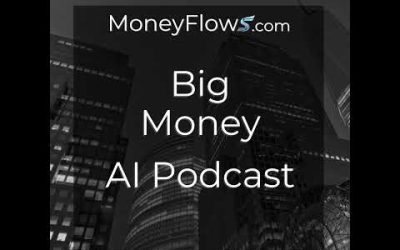by Gary Alexander
September 10, 2024
The first week September 2024 was brutal – with the Dow down nearly 3% in successive daily declines of 627, 220 and 410 points, with only a brief 37-point rise (+0.09%) on Wednesday. That was the good news. The S&P 500 was down -4.25%, with the Russell 2000 and NASDAQ composite each down 5.7%.
That’s “usual” in the sense that September is the worst month of the year, historically, for the U.S. stock market, but it’s not usual in term of monthly timing, since September is usually a tale of two halves, with the first half of September most often being flat, with nearly all of the carnage coming late in the month.
Graphs are for illustrative and discussion purposes only. Please read important disclosures at the end of this commentary.
October is a mirror image of September, with most of the inter-month damage falling in the first half. That’s why I label this danger zone “SEPTOBER,” September 21 to October 21, the first month of fall.
This trend goes back a long time. In the last 123 years, 1900 to 2022, the Dow averaged a mid-year gain of +8.8%, followed by an early autumn decline of 7.8%, coming mostly in September and October, followed by our year-end reward, a near-14% rocket rise from the autumn low to a spring peak:
1974’s “Stagflation September”’
There was a spectacular example of just such a collapse 50 years ago, when the S&P 500 declined 12% in September 1974, capping a quarterly loss of 26%. (The Dow lost 24.6% then, falling from 806 to 607).
September 1974 began on a controversial note when, on September 8, 1974 (a Sunday), new President Gerald Ford pardoned former president Richard Nixon for any crimes he may have committed while in office. On the following Monday morning, the stock market rebelled by staging another free fall. In the following week (September 9-13), the Dow fell over 50 points (-7.5%), while the S&P 500 fell by 8.7%.
September 1974 closed on another negative news event. On September 28 (a Saturday), President Ford concluded an emergency two-day summit on how to fix a combined surge of inflation and recession, happening concurrently, dubbed by some with a fresh word, stagflation. In 1974, inflation hit 10.3% for the full year, the first double-digit inflation year in our peacetime history. Meanwhile, the economy was stagnant: Auto sales were off 20%, housing starts were down 40% and unemployment hit 7.2%.
Coming out of that two-day Stagflation Summit, Ford’s experts had no answer for this unique situation, so on Monday, September 30, the S&P fell 2.2% to bring the monthly loss to 11.93%, and it kept falling, but the good news is that the S&P 500 gained over 72% in the next two years – minus a big inflation tax.
This drama in 1974 wasn’t enhanced by a Presidential election, but it was similar to 2024 in that a sitting president was forced to resign, to be replaced by a Vice President soon to run on his own merits.
The Same Fall Cycle is Amplified During Presidential Election Years
We can track a similar pattern in the Presidential election years (since 1950) – a strong mid-year rise, followed by a significant sag in September and October, then a post-election surge:
Graphs are for illustrative and discussion purposes only. Please read important disclosures at the end of this commentary.
This trend has continued in the last few elections, even though the 2008 election skewered the sample, due to the catastrophic Financial Crisis of 2008-09, which began in earnest with the failure of Lehman Brothers on September 15, 2008. This delivered a market crash totally unrelated to the upcoming Presidential election between Barack Obama and John McCain – with incumbent George W. Bush as a lame duck.
So, with this 2008 data in mind, I’m confident you will allow me to throw out the 2008 market year when examining the last few election cycles. With the 2000 election also controversial due to “hanging chads” in Florida, plus a dot.com market collapse underway, I’ll use the 2004, 2012, 2016 and 2020 elections.
Average Calendar Return of the Last Four “Normal” Presidential Election Years (S&P 500)
(Averaging the 2004, 2012, 2016 and 2020 election years)
If my four-year sample doesn’t impress you, here is a chart that uses the complete data since 1928. The pattern is similar. After a while, you begin to realize that the 4-year Presidential election cycle is one of the more predictable external patterns in stock market history – nothing like hemlines or Super Bowls.
Graphs are for illustrative and discussion purposes only. Please read important disclosures at the end of this commentary.
So, the data all seem to add up – a weak and uncertain patch lies ahead of us, until Election Day, due to uncertainty about which person and political party will dominate. Then we’ll see a year-end rally based mostly on “hope and change,” even though we don’t know much about what the winner can accomplish until the structure of Congress and the new President’s support team takes form and shape in January.
The post 9-10-24: “SEPTOBER” in Market History – Especially in Election Years appeared first on Navellier.





